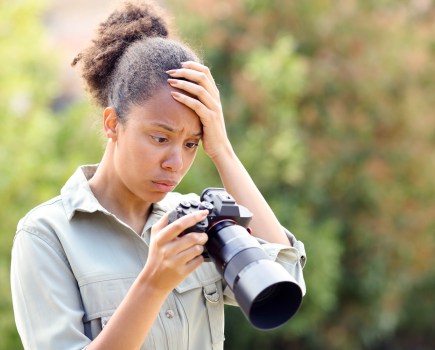
[UPDATE 4.40pm: Adds the number of photos rejected by World Press Photo]
World Press Photo today said there is an ‘urgent need’ to create a ‘deeper understanding’ of issues that surround the application of post-processing standards in professional photojournalism.
This year’s contest, won by Danish photographer Mads Nissen, pulled in 97,912 entries from 5,692 photographers worldwide.
This year, entrants were told to provide image files for each entry, as recorded by the camera, up to the final stages before submission.
A World Press Photo spokeswoman has this afternoon told Amateur Photographer that judges ended up rejecting 20 entries from proceeding to the finals stage.
‘For 92 stories and singles, the unprocessed files were requested for analysis during the penultimate round,’ explained the World Press Photo spokeswoman.
‘All but two photographers submitted their unprocessed files upon request. Those two entries did not proceed to the final round.
‘After reviewing the [independent] experts’ report and debating the issues, the jury decided that 20 entries were not eligible for the finals.
‘That is 22% [of] the entries at that stage still in [the] competition.’
Though World Press Photo believes there were ‘no attempts to deceive or mislead’ judges, the body’s managing director Lars Boering said that experts spotted ‘anomalies in a large number of files and presented their findings to the jury’.
‘According to the contest rules, only retouching of files that conforms to currently accepted standards in the industry is allowed, and the jury is the ultimate arbiter of these standards,’ added Boering.
‘It seems some photographers can’t resist the temptation to aesthetically enhance their images during post-processing, either by removing small details to “clean up” an image, or sometimes by excessive toning that constitutes material change to the image.
‘Both types of retouching clearly compromise the integrity of the image.
‘Consequently, the jury rejected 20% of those entries that had reached the penultimate round of the contest and were therefore not considered for prizes.’
Last year, a World Press Photo survey of 45 industry professionals found that limited adjustment of news and documentary photographs is acceptable before publication.
The Integrity of the Image report concluded that minor alterations to photographs, such as ‘limited cropping’, toning and colour adjustment, and conversion to greyscale, are considered acceptable.
However, the report conceded that what constitutes a ‘minor’ change is open to interpretation.
The report’s author, Dr David Campbell, said there was a clear consensus that ‘manipulation’ of an image, meaning the addition or subtraction of content, is not acceptable.
The Integrity of the Image report suggested that the process of image verification would be ‘enhanced and encouraged’ if creators and publishers were to adopt ‘new and transparent practices detailing how an image has been made’ – by creating a ‘digital audit trail and certified workflow’.
Campbell said he hoped the report would encourage industry debate on the issue, following concerns about the credibility of news and documentary photos that have erupted, periodically, over the past decade.
World Press Photo, which is based in Amsterdam, today said there is a clear need for further dialogue with the industry on this topic following today’s news.







